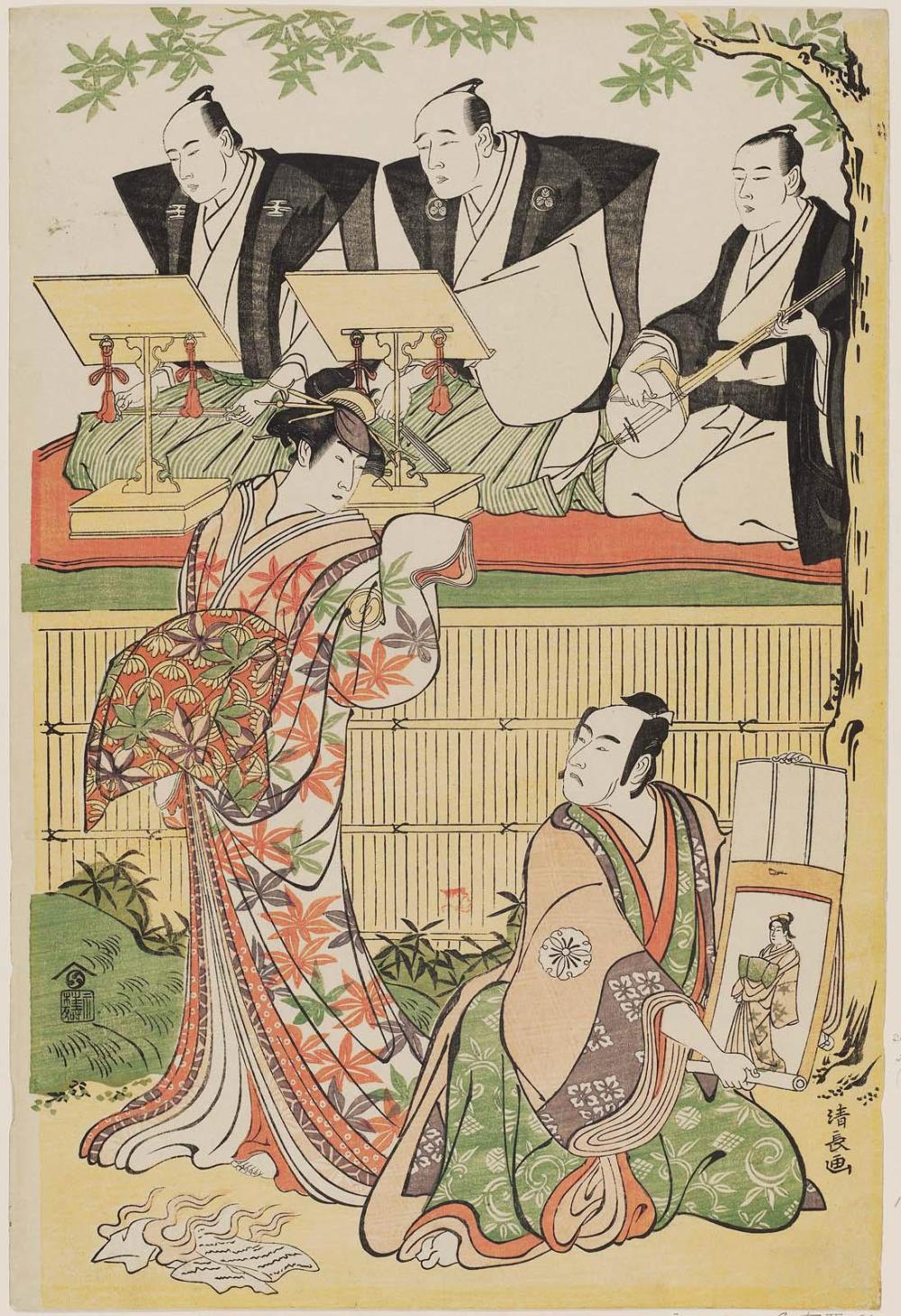Advanced Search 
四代目松本幸四郎の浮田左近吾、三代目沢村宗十郎の高尾の幽魂、富本斎宮太夫、富本綾太夫、佐々木市四郎

Actors Matsumoto Kôshirô IV as Ukita Sakingo and Sawamura Sôjûrô III as the Ghost of Takao, with chanters Tomimoto Itsukidayû and Tomimoto Awatayû, and accompanist Sasaki Ichishirô
四代目松本幸四郎の浮田左近吾、三代目沢村宗十郎の高尾の幽魂、富本斎宮太夫、富本綾太夫、佐々木市四郎
Japanese
Edo period
1788 (Tenmei 8), 7th month
Medium/Technique
Woodblock print (nishiki-e); ink and color on paper
Dimensions
Vertical ôban; 38.8 x 26.8 cm (15 1/4 x 10 9/16 in.)
Credit Line
William Sturgis Bigelow Collection
Accession Number11.13921
NOT ON VIEW
CollectionsAsia, Prints and Drawings
ClassificationsPrints
Catalogue Raisonné
Chiba Museum, Torii Kiyonaga (2007), list #96 (no photo); Tôbu bijutsukan, Edo no hana kabuki-e ten (1999), #28; Ukiyo-e shûka 2 (1985), list #111, pl. 71; Hirano, Kiyonaga (1939), #860, pl. LXXXIII
DescriptionMFA impressions: 11.13921, 21.5476
Play (jôruri, second feature): Ominaeshi Sugata no Hatsuaki
Play (main feature): Takao Daimyôjin Momiji no Tamagaki
Theater: Nakamura
女郎花姿の初秋(おみなえしすがたのはつあき)、2番目、富本
高尾大明神楓籬(たかおだいみょうじんもみじのたまがき)、4番続
中村
1788、戊申、天明08、07・20
Play (jôruri, second feature): Ominaeshi Sugata no Hatsuaki
Play (main feature): Takao Daimyôjin Momiji no Tamagaki
Theater: Nakamura
女郎花姿の初秋(おみなえしすがたのはつあき)、2番目、富本
高尾大明神楓籬(たかおだいみょうじんもみじのたまがき)、4番続
中村
1788、戊申、天明08、07・20
Signed
Kiyonaga ga
清長画
清長画
ProvenanceBy 1911, purchased by William Sturgis Bigelow (b. 1850 - d. 1926), Boston [see note 1]; 1911, gift of Bigelow to the MFA. (Accession Date: August 3, 1911)
NOTES:
[1] Much of Bigelow's collection of Asian art was formed during his residence in Japan between 1882 and 1889, although he also made acquisitions in Europe and the United States. Bigelow deposited many of these objects at the MFA in 1890 before donating them to the Museum's collection at later dates.
NOTES:
[1] Much of Bigelow's collection of Asian art was formed during his residence in Japan between 1882 and 1889, although he also made acquisitions in Europe and the United States. Bigelow deposited many of these objects at the MFA in 1890 before donating them to the Museum's collection at later dates.
